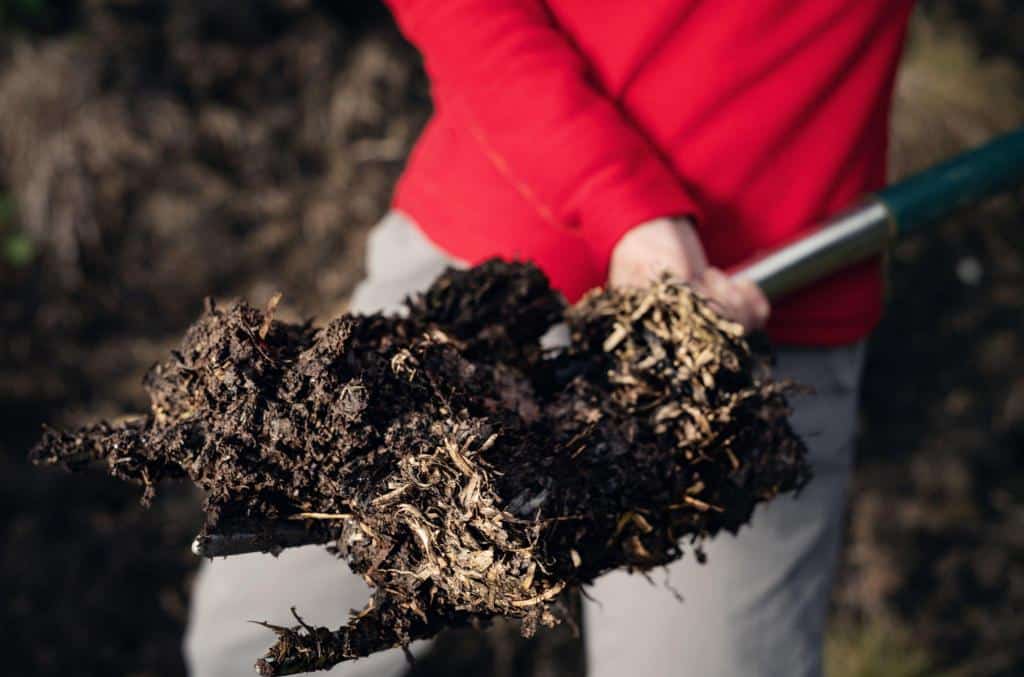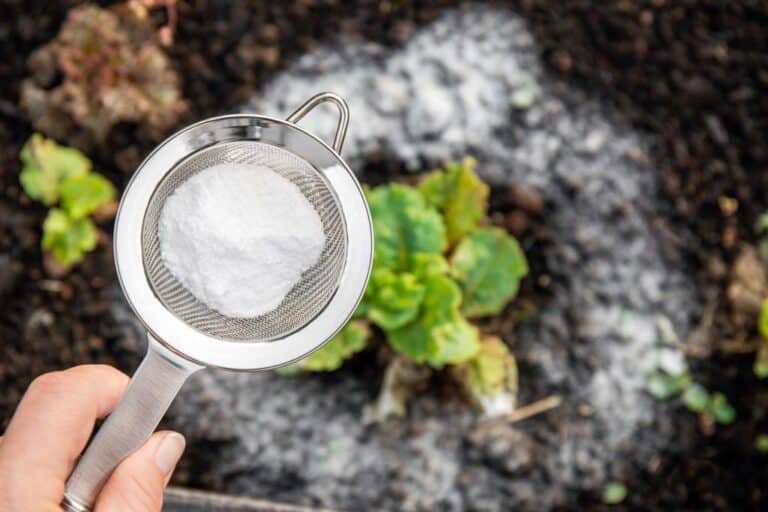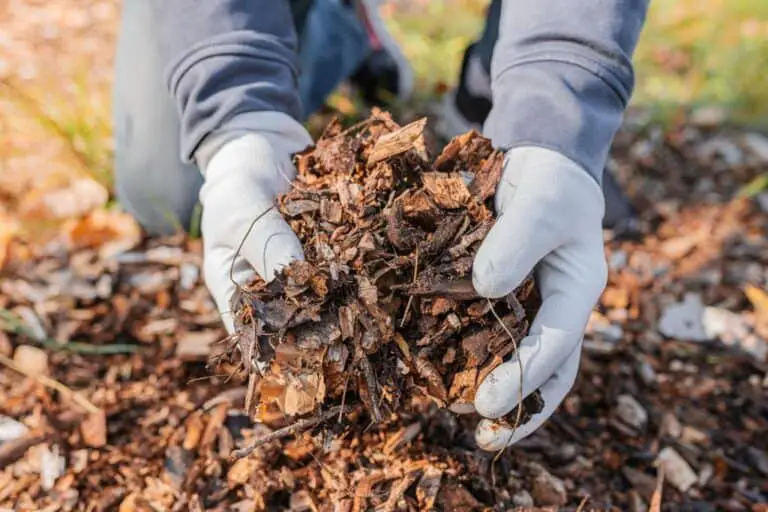How to Improve Soil Fertility Naturally and Organically?

Imagine a garden where vibrant, lush greenery flourishes without the need for synthetic chemicals or expensive fertilizers. Picture a farm where bountiful harvests thrive in harmony with nature, leaving a positive mark on the environment. Welcome to the world of improving soil fertility naturally and organically, where we unveil the art and science of nurturing your soil back to health.
In this eco-conscious era, the desire to cultivate gardens and farms sustainably has never been more pronounced. It’s a quest for a greener, healthier planet, one backyard and one acre at a time. But how do you transform your soil into a thriving ecosystem that supports robust plant life while minimizing harm to nature?
Buckle up, as we embark on a journey into the realm of natural soil fertility improvement. We’ll delve into the rich soil amendment practices that generations of gardeners and farmers have cherished, passed down through the ages. From the magic of composting to the wisdom of crop rotation, we’ll unveil the secrets that lie beneath the surface. So, grab your gardening gloves and join us on this enlightening expedition towards a more organic, sustainable, and naturally fertile future.
Understanding Soil Fertility
Before we delve into the nitty-gritty, let’s grasp the essence of soil fertility. Soil fertility refers to the soil’s ability to provide essential nutrients to plants, facilitating their growth and development.
Picture it as a perfect recipe, where the soil serves as the chef’s kitchen, supplying the ideal mix of nutrients. This balance includes macronutrients like nitrogen (for green growth), phosphorus (for strong roots), and potassium (for overall health), as well as micronutrients like iron and zinc, which are equally vital but in smaller quantities.
So, what factors make up this nutrient buffet? Here are the key players:
| Factor | Description |
| pH | The level of acidity or alkalinity in the soil. |
| Nutrient Levels | The presence and concentration of vital nutrients. |
| Organic Matter | The decomposed remains of plants and animals. |
Understanding these factors is crucial, as they serve as the foundation upon which we’ll build our journey to improve soil fertility.
How to Improve Soil Fertility Naturally and Organically
1. Organic Matter and Composting

Organic matter is the secret sauce to fertile soil. It’s like a nutritious meal for your soil microbes and plants. Here’s why it matters:
- Nutrient Storage: Organic matter acts as a reservoir for essential nutrients, slowly releasing them to plants as needed.
- Improved Soil Structure: It enhances soil structure, promoting good drainage and aeration.
Composting is a potent tool for introducing organic matter into your soil. Here’s a step-by-step guide:
- Gather Materials: Collect organic waste like kitchen scraps, leaves, and grass clippings.
- Layering: Alternate between green (nitrogen-rich) and brown (carbon-rich) materials. Think of it as a lasagna of organic matter.
- Aeration: Turn the compost pile regularly to aerate it and speed up decomposition.
- Patience: Composting takes time, so be patient. In a few months, you’ll have nutrient-rich compost to feed your soil.
2. Nutrient Management through Cover Crops
Cover crops are like nature’s soil blankets. They protect and enrich your soil during periods of rest or between planting seasons. Let’s explore their benefits:
- Weed Suppression: Cover crops outcompete weeds, reducing the need for herbicides.
- Erosion Control: They prevent soil erosion, especially on sloped terrain.
- Nutrient Accumulation: Some cover crops, like legumes, can fix nitrogen from the air, enriching the soil.
Different cover crops offer distinct advantages. Here are some options:
- Crimson Clover: Fixes nitrogen and adds vibrant color.
- Winter Rye: Excellent for weed suppression and erosion control.
- Buckwheat: Grows fast, attracting pollinators and improving soil structure.
3. Crop Rotation and Diversity
Crop rotation is a centuries-old practice that’s like a spa day for your soil. It involves planting different crops in a planned sequence. Here’s why it works:
- Nutrient Balance: Different crops have varying nutrient needs, preventing the depletion of specific nutrients in the soil.
- Pest and Disease Control: Crop rotation can break pest and disease cycles, reducing the need for chemical interventions.
The key to effective crop rotation is thoughtful planning. Consider factors like:
- Crop Families: Avoid planting related crops consecutively to minimize disease risk.
- Life Cycles: Mix short-season and long-season crops to vary nutrient uptake.
- Cover Crops: Incorporate cover crops into your rotation plan for added benefits.
By implementing a well-thought-out crop rotation plan, you’ll keep your soil fertile and disease-resistant.
4. Beneficial Microorganisms and Mycorrhizae
The Microscopic Heroes of Soil
Invisible to the naked eye, beneficial microorganisms are the unsung heroes of soil health. They perform a myriad of essential functions that nourish plants and enhance soil fertility.
One key player in this microbial symphony is mycorrhizal fungi. These symbiotic fungi form partnerships with plant roots, creating a mutually beneficial relationship. Here’s how it works:
Mycorrhizae extend the reach of a plant’s roots, effectively increasing its foraging capabilities. They form a network that connects multiple plants, allowing them to share nutrients and information.
Here’s a quick overview of how mycorrhizae enhance nutrient uptake:
- Improved Phosphorus Uptake: Mycorrhizal fungi are particularly skilled at sourcing phosphorus, a vital nutrient for plant growth, from the soil. They can access phosphorus in ways that plant roots cannot.
- Enhanced Water Absorption: These fungi also improve a plant’s ability to absorb water, ensuring it stays hydrated during dry spells.
- Disease Resistance: Mycorrhizae can bolster a plant’s defenses against soil-borne pathogens.
Strategies for a Thriving Microbial Community
Now that we understand the importance of beneficial microorganisms to increase soil fertility, let’s explore ways to promote their well-being in your soil:
- Reduce Chemical Use: Minimize the use of synthetic pesticides and fertilizers, as they can harm beneficial microorganisms.
- Organic Matter: Continually add organic matter, such as compost, to your soil. It serves as food for microorganisms.
- Avoid Soil Compaction: Compact soil restricts the movement of air and water, making it less hospitable for microorganisms. Use raised beds or paths to avoid excessive soil compaction.
- Limit Disturbance: Excessive tilling and soil disturbance disrupt the delicate balance of microbial life. Practice no-till or low-till gardening to preserve the soil ecosystem.
- Crop Rotation: Rotate your crops to prevent the buildup of soil-borne pathogens and to maintain a diverse microbial community.
5. Natural Soil Amendments
While organic matter is a powerful tool for improving soil fertility, there are specific natural amendments that can target nutrient deficiencies and optimize soil conditions. Let’s explore some of these amendments:
| Amendment | Description | Benefits | Precautions |
| Bone Meal | Ground-up animal bones, rich in phosphorus. | Boosts phosphorus levels. | May attract scavengers. |
| Rock Phosphate | A slow-release source of phosphorus. | Enhances phosphorus availability. | Apply sparingly; may be alkaline. |
| Greensand | A marine sediment rich in potassium and trace minerals. | Provides potassium and micronutrients. | Slow-release; don’t over-apply. |
When using natural soil amendments, it’s essential to exercise caution.
- Start Small: Apply amendments in moderation, following the recommended rates. Over-application can lead to nutrient imbalances or environmental concerns.
- Know Your Soil: Perform a soil test before adding amendments to understand your soil’s specific needs.
- Be Patient: Natural amendments may take time to show their full effects. Give them time to integrate into the soil ecosystem.
6. Mulching Techniques
Mulch is a gardener’s best friend. It’s a protective layer that shields the soil from harsh environmental conditions while enhancing soil fertility.
Importance of Mulch
- Moisture Retention: Mulch helps retain soil moisture, reducing the frequency of irrigation.
- Temperature Regulation: It acts as an insulator, keeping soil temperatures more stable.
- Weed Suppression: Mulch discourages weed growth, reducing competition for nutrients.
Different types of mulch materials offer various benefits. Here are some common options:
- Organic Mulch: Compost, straw, and wood chips gradually break down, enriching the soil as they decompose.
- Inorganic Mulch: Gravel or landscape fabric provides long-lasting weed control but doesn’t add nutrients to the soil.
- Living Mulch: Groundcovers like clover or low-growing herbs act as living mulch, improving soil and providing habitat for beneficial insects.
To make the most of mulch, follow these guidelines:
- Apply an Adequate Layer: Typically, 2-4 inches of mulch is sufficient. Too much mulch can trap moisture and encourage pests.
- Leave Space Around Plant Stems: Keep mulch away from plant stems to prevent rot and discourage pests.
- Refresh Mulch as Needed: Mulch decomposes over time, so replenish it periodically to maintain its benefits.
By mastering the art of mulching, you’ll create a nurturing environment for your plants while bolstering soil fertility.
Water Management for Soil Fertility
Water is the elixir of life for plants and a crucial player in soil fertility. Proper water management ensures that your soil remains a hospitable environment for plant growth.
The Significance of Water Management
- Nutrient Transport: Water carries essential nutrients from the soil to plant roots, facilitating nutrient uptake.
- Soil Structure: Adequate moisture helps maintain good soil structure, preventing compaction.
- Microbial Activity: Microorganisms require water to thrive, aiding in nutrient cycling.
Different crops and soil types require varying irrigation approaches. Here are some common methods:
- Drip Irrigation: Delivers water directly to the root zone, minimizing wastage and reducing the risk of foliar diseases.
- Soaker Hoses: Similar to drip irrigation but uses hoses with perforations to deliver water slowly.
- Sprinkler Systems: Suitable for larger areas but can lead to water loss through evaporation.
- Rain Barrels: Collect rainwater to use for irrigation, reducing water bills and promoting sustainability.
7. Sustainable Farming Practices
As we near the conclusion of our journey, it’s crucial to emphasize the importance of sustainable farming practices in maintaining and improving soil fertility. Sustainability is not just a buzzword; it’s a fundamental principle for nurturing the Earth and ensuring bountiful harvests for generations to come.
Regenerative agriculture is a holistic approach that goes beyond sustainable practices. It aims to restore and enhance the natural resources of the land. Here are key aspects of regenerative agriculture:
- No-Till Farming: Reducing or eliminating tilling helps retain soil structure and minimizes disturbance to the soil ecosystem.
- Cover Cropping: As discussed earlier, cover crops protect and nourish the soil during off-seasons.
- Crop Rotation: Diversifying crops in rotation not only prevents nutrient depletion but also confuses pests and diseases.
- Integrated Pest Management (IPM): IPM focuses on using natural predators and biological controls to manage pests, reducing the reliance on chemical pesticides.
The shift towards organic and regenerative farming practices brings numerous long-term benefits to both soil and the environment:
- Improved Soil Health: Over time, the soil becomes more fertile, with enhanced microbial activity and nutrient cycling.
- Carbon Sequestration: Organic matter-rich soils trap carbon dioxide from the atmosphere, mitigating climate change.
- Water Quality: Reduced chemical use and soil erosion lead to better water quality in nearby rivers and streams.
- Biodiversity: These practices promote diverse ecosystems, including beneficial insects and wildlife.
- Resilience: Healthy soils are more resilient to extreme weather events, such as droughts or heavy rains.
8. Vermicomposting
Vermicomposting is the process of using earthworms to break down organic matter into nutrient-rich castings. It’s an efficient way to produce high-quality compost with minimal effort.
How to Start Vermicomposting:
- Purchase a vermicomposting bin and red wiggler worms.
- Add kitchen scraps to the bin, and let the worms do the work.
- Harvest the nutrient-rich worm castings for your garden.
See also: Does Soil Solarization Kill Worms and Nematodes?
9. Biochar
Biochar is a type of charcoal produced by heating organic material in a low-oxygen environment. When added to soil, it enhances its water-holding capacity and provides a habitat for beneficial microorganisms.
Benefits of Biochar:
- Carbon Sequestration: Biochar helps capture carbon from the atmosphere, making it an environmentally friendly soil amendment.
- Improved Soil Structure: It enhances the soil’s ability to retain nutrients and water.
10. pH Management
Maintaining the right pH level is crucial for soil fertility. Most plants prefer a slightly acidic to neutral pH range. You can adjust your soil’s pH naturally by adding lime to raise pH or sulfur to lower it.
11. Natural Pest Control
Implementing natural pest control methods, such as companion planting or introducing beneficial insects, can help reduce the need for chemical pesticides that can harm soil health.
Benefits of Natural Pest Control:
- Preserves Beneficial Insects: Avoiding chemical pesticides helps maintain a balanced ecosystem in your garden.
- No Soil Contamination: It prevents the introduction of harmful chemicals into your soil.
Conclusion
In conclusion, nurturing soil fertility naturally and organically is both an art and a science. It requires an understanding of the intricate soil ecosystem and a commitment to sustainable farming practices. By harnessing the power of beneficial microorganisms, using natural amendments wisely, mastering mulching techniques, managing water efficiently, and embracing regenerative agriculture, we can enrich our soil and secure our agricultural future.
As stewards of the Earth, it’s our responsibility to leave behind a legacy of fertile soil that sustains life for generations to come. In doing so, we ensure that the cycle of life and growth continues to thrive, nourishing not only our bodies but also our planet.
Let’s embark on this journey together, nurturing the very foundation of life beneath our feet – the soil.







